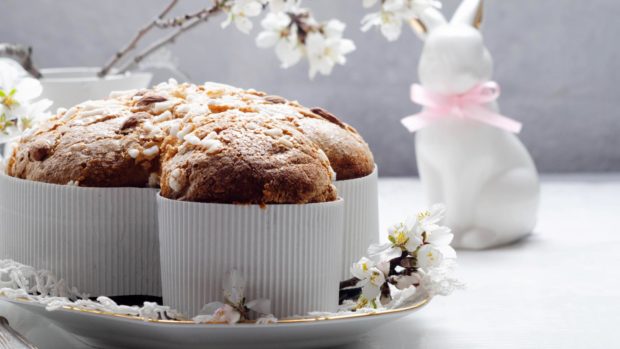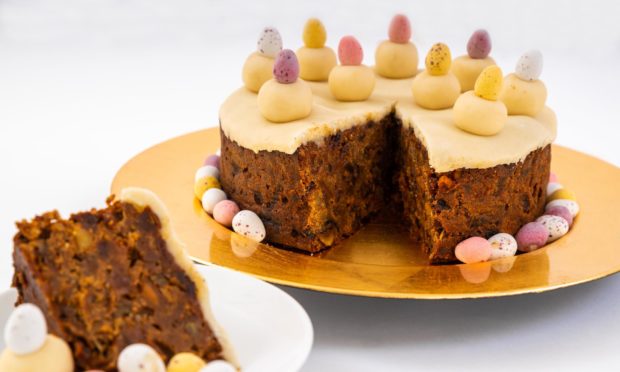If you’re looking to make some traditional fare ahead of Easter weekend, why not try out these two cake recipes from the 1930s?
Somehow it’s Easter once more and the perfect excuse to get back in the kitchen – not that we ever needed one.
Aunt Kate, the “original domestic goddess”, wrote recipes for the People’s Journal and the People’s Friend from the 1880s to the 1960s and penned various cooking and baking guides during that time, including her 1933 Baking Book and 1910 Cookery Book.
Here, we’ve included two of her Easter recipes from the 1930s that can still be made today, though, bear in mind that measurements and oven temperatures may not be entirely accurate.
For more from Aunt Kate’s Kitchen, take a look at the rest of the series here.
Easter Cake

Ingredients
- 1 lb (approx 450g) flour
- ½ lb (approx 225g) sugar
- A pinch of salt
- 5 eggs
- 6 oz (approx 170g) currants
- 2 oz (approx 55g) chopped almonds
- Milk
- ½ lb (approx 225g) butter
- 2 tsp baking powder
- 6 oz (approx 170g) sultanas
- 4 oz (approx 115g) dried fruit peel
- Rind of 1 lemon
- Almond paste
Method
- First, prepare the fruit and mix it with a spoonful of dry flour. Then sieve the flour, salt and baking powder on to a sheet of baking paper.
- Put the butter and sugar into a warm basin or bowl and beat them to a cream. Then add the eggs, one at a time, beating the mixture well between each.
- Flavour with grated lemon rind, and then add the flour and milk by degrees. When thoroughly beaten, stir in the fruit and almonds.
- Divide the mixture into three. Pour one part into a lined cake tin and cover with a thick layer of the almond paste.
- Add the second part, cover with another layer of paste, then pour in the rest of the cake mixture.
- Bake in a moderate oven (approx 190ºC) for 1½ to 2 hours.
- When the cake is cool, cover it with thick chocolate icing and decorate the top with tiny chocolate eggs and chickens. A pretty paper frill also makes a nice finish.
Simnel cake

Ingredients
- ½ lb (225g) butter
- ¾ lb currants
- 1 tsp baking powder
- 6 eggs
- ¾ lb (approx 340g) flour
- ¼ oz (approx 8g) mixed spice
- ½ lb (approx 225g) sugar
- ¼ lb (approx 115g) citron peel
- Almond paste
Method
- Beat the butter and sugar to a cream in a basin.
- Beat the eggs, one at a time. Then add the flour sifted with the baking powder, the washed and dried currants, chopped citron peel and spice. Stir the ingredients well together.
- Put half the cake mixture into a greased cake tin, lined with a double fold of greased paper.
- Place a layer of almond paste on top, taking care that it is even in thickness – it should be about ¾ inch thick.
- Cover with the remainder of the cake mixture, press down well and bake in a moderate oven (approx 190ºC).
- When nearly done, rough a roll of almond paste with a fork and place it around the edge of the cake, leaving a space in the centre.
- Cover with a piece of kitchen paper and return to the oven to cook.
- When baked, remove the paper and fill the centre of the almond paste round with eggs made of paste and tinted with pale vegetable colours.
